Case study
Consolidating fragmented enterprise tools with Merlin
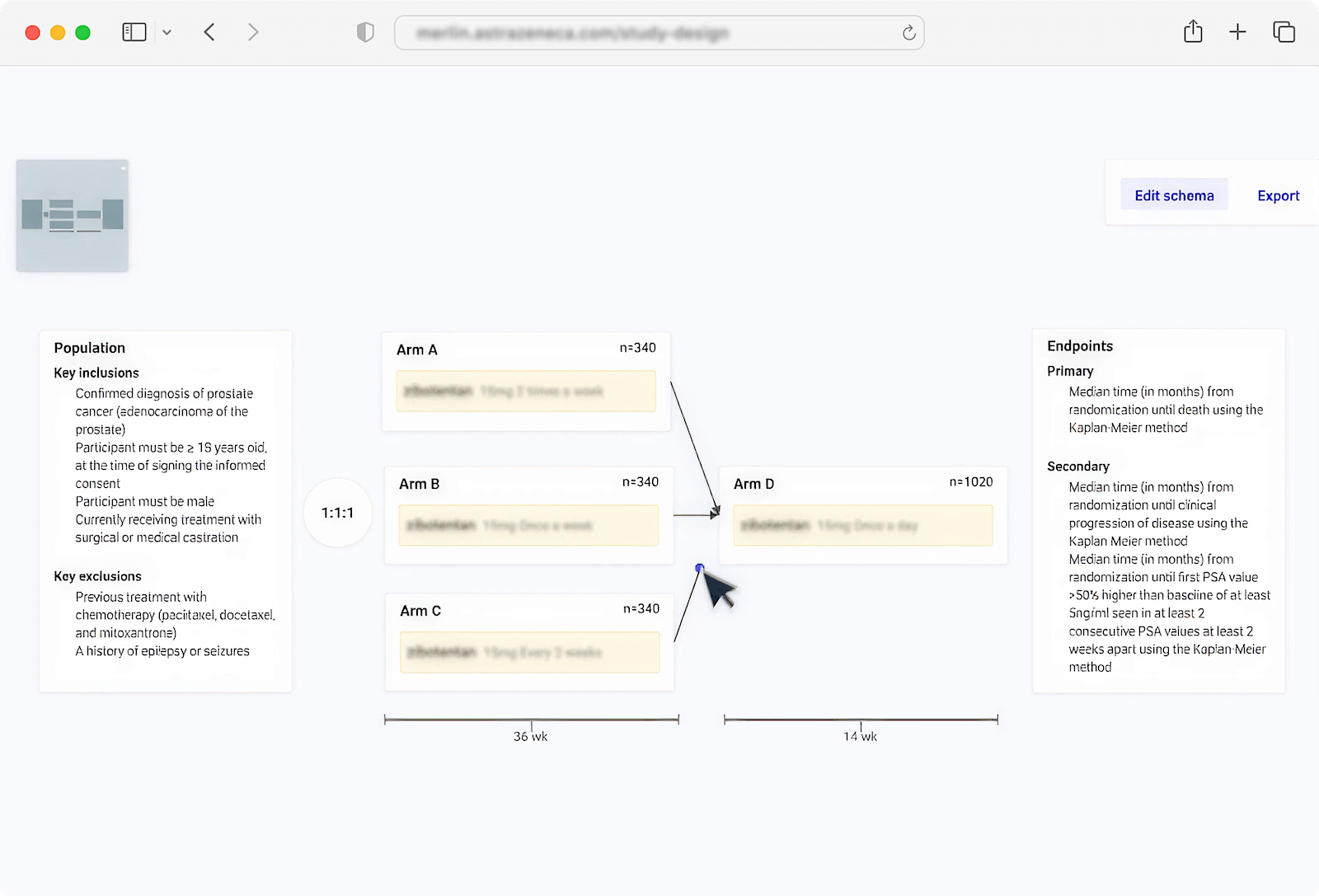
My role: Design Lead & Contributor
Project type: Enterprise tools
Company: AstraZeneca
My contributions: Design leadership, Team leadership, Product strategy, Rapid prototyping, UX design
Outcome: 100% of users successfully moved to consolidated app, reduced cost to serve, 2× improvement in CSAT, 3× performance boost in UX team
The Challenge
When I joined Digital Health R&D, the work to consolidate six discrete study design and planning tools was already underway. These tools were deeply embedded in AstraZeneca's governance process, delivering millions in annual benefits.
Consolidation was strategically aimed to reduce cost to serve, remove user friction, and leverage the benefits of centralisation: unified data governance and analytics, holistic optimisation, and serving up- and downstream use cases from one study blueprint.
Work was technically advanced but lacked UX vision and rigour. There was no clarity on user win conditions or plan to resolve functional redundancies. The team was heading into trouble.
As design lead, I acted fast to help the team replan, regroup, listen to users, and set up for successful delivery.
My Approach
I started by reorganising the UX team to shift focus from lengthy UI hand-offs to concept validation where key product bets remained untested. We had talented full-stack UXers pigeon-holed to narrow roles, wasting their potential.
So I asked them to take ownership of the entire design process: discovery to delivery. I paired greater responsibility with coaching and peer feedback to empower autonomy and influence in squads.
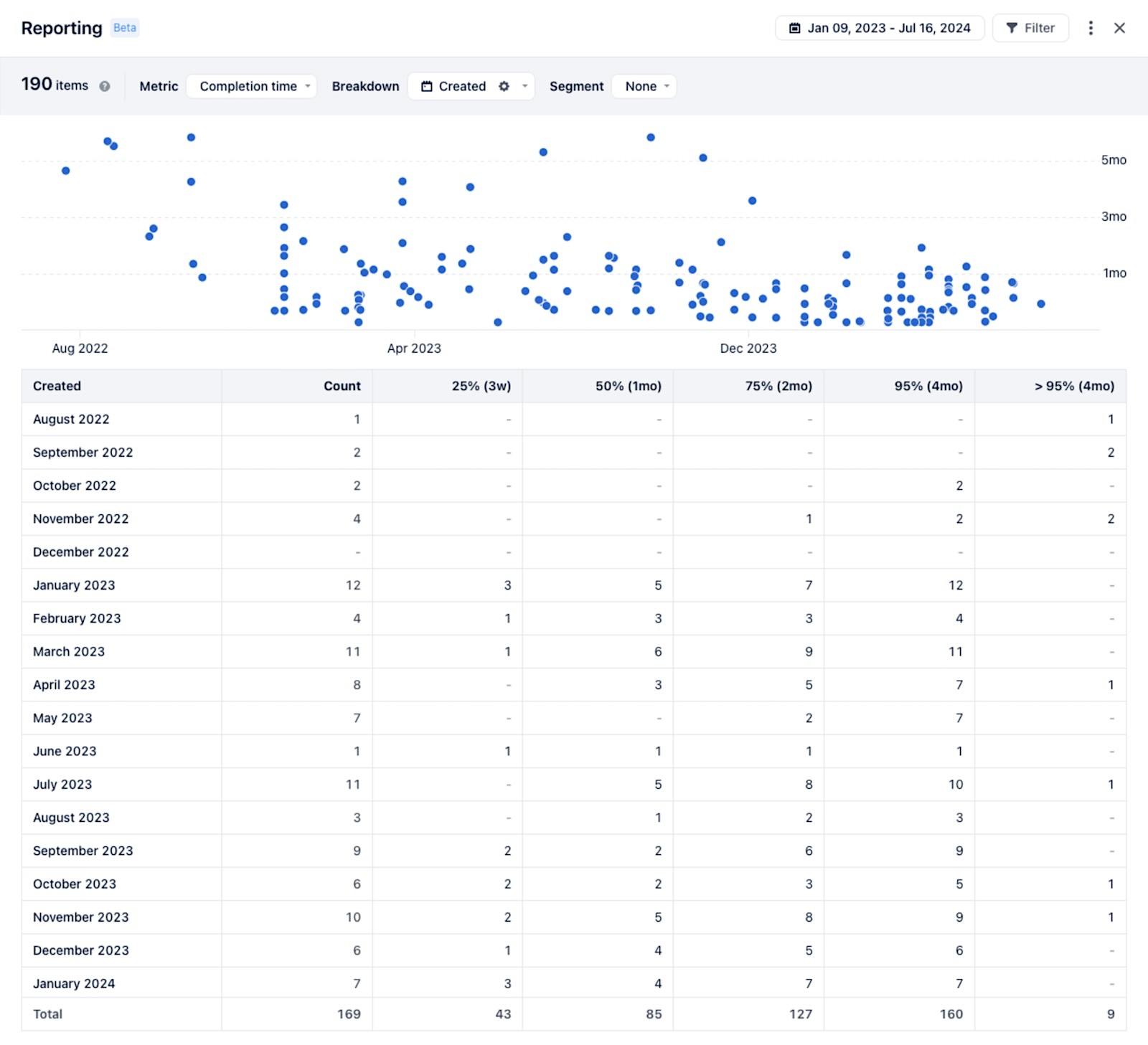
I introduced changes to UX process and scope that brought a 3× performance boost to the UX team, evidenced by improved burndown rates from Feb 2023 to June 2024.
In parallel, I expedited concept validation to ensure value delivery. I led cross-functional prototyping of the end-to-end unified workflow and tested it with users. We confirmed the need for a single tool and learnt that:
- users want to enter study inputs only once
- users expect data to sync across all product parts
- redundant features degrade workflow and data integrity
- user trust depends on system consistency
To cross-reference qualitative insights with quantitative data, I led an initiative to set up user analytics, segment user populations, track meaningful metrics, and foster data-driven development.
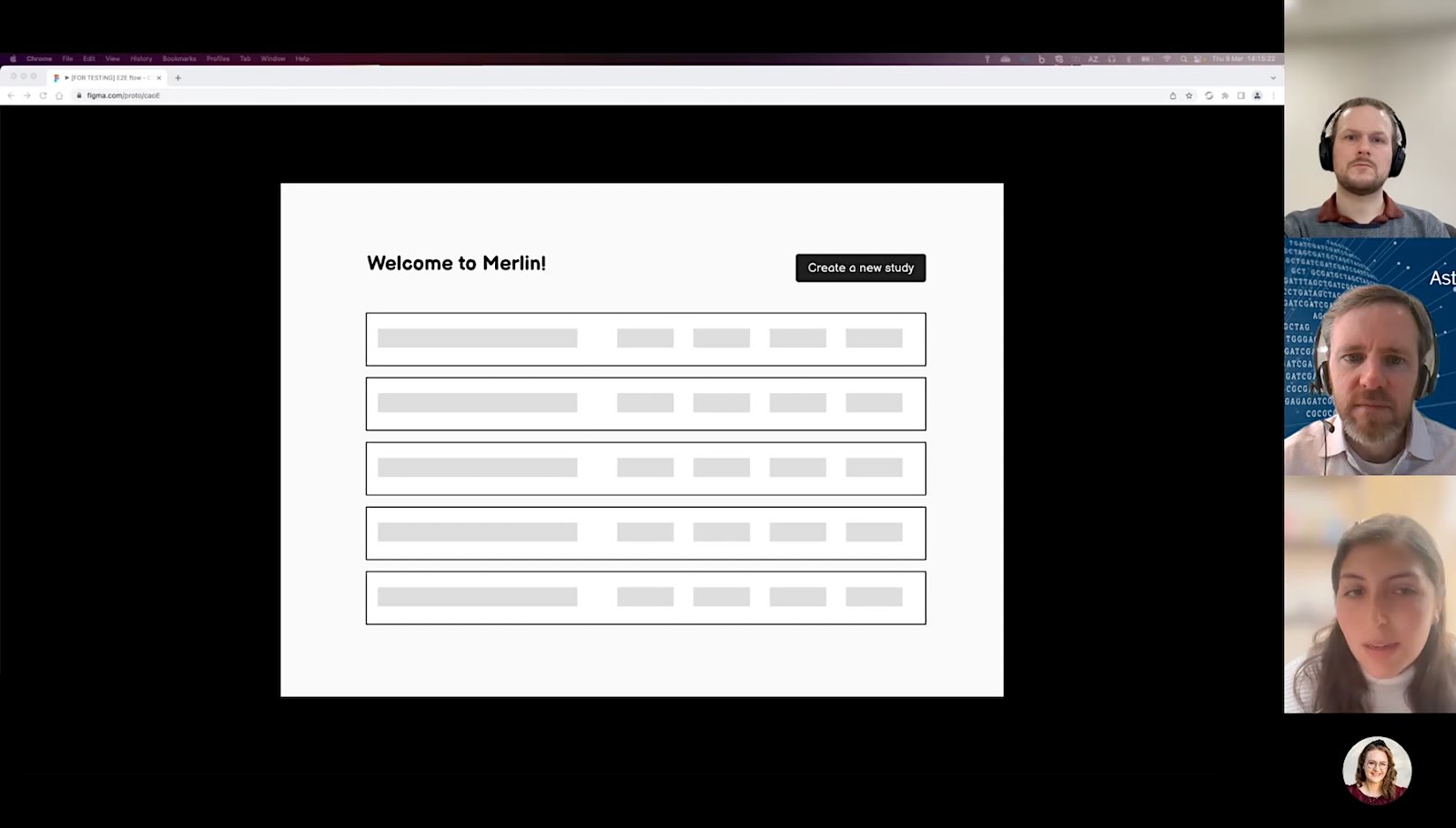
Low-fidelity prototypes helped us validate the solution, align the team on shared vision, support product prioritisation, and deliver parallel workstreams towards a common goal.
The Solution
The team delivered Merlin, consolidating six tools together into one study optimisation workflow:
- Study Designer — digitises clinical study design
- Cost Estimator — estimate study cost in 4 minutes
- Feasibility — recommends sites to meet recruitment goals
- Carbon Emissions — calculates CO2 emitted by studies
- Patient Experience — measure patient burden
- Complexity Tool — evaluates study design complexity
Merlin uses a single codebase and a design system for consistent experience. It supports all prior use cases plus new ones allowing users to generate study options and make holistic multi-factor comparisons that inform business decision making.
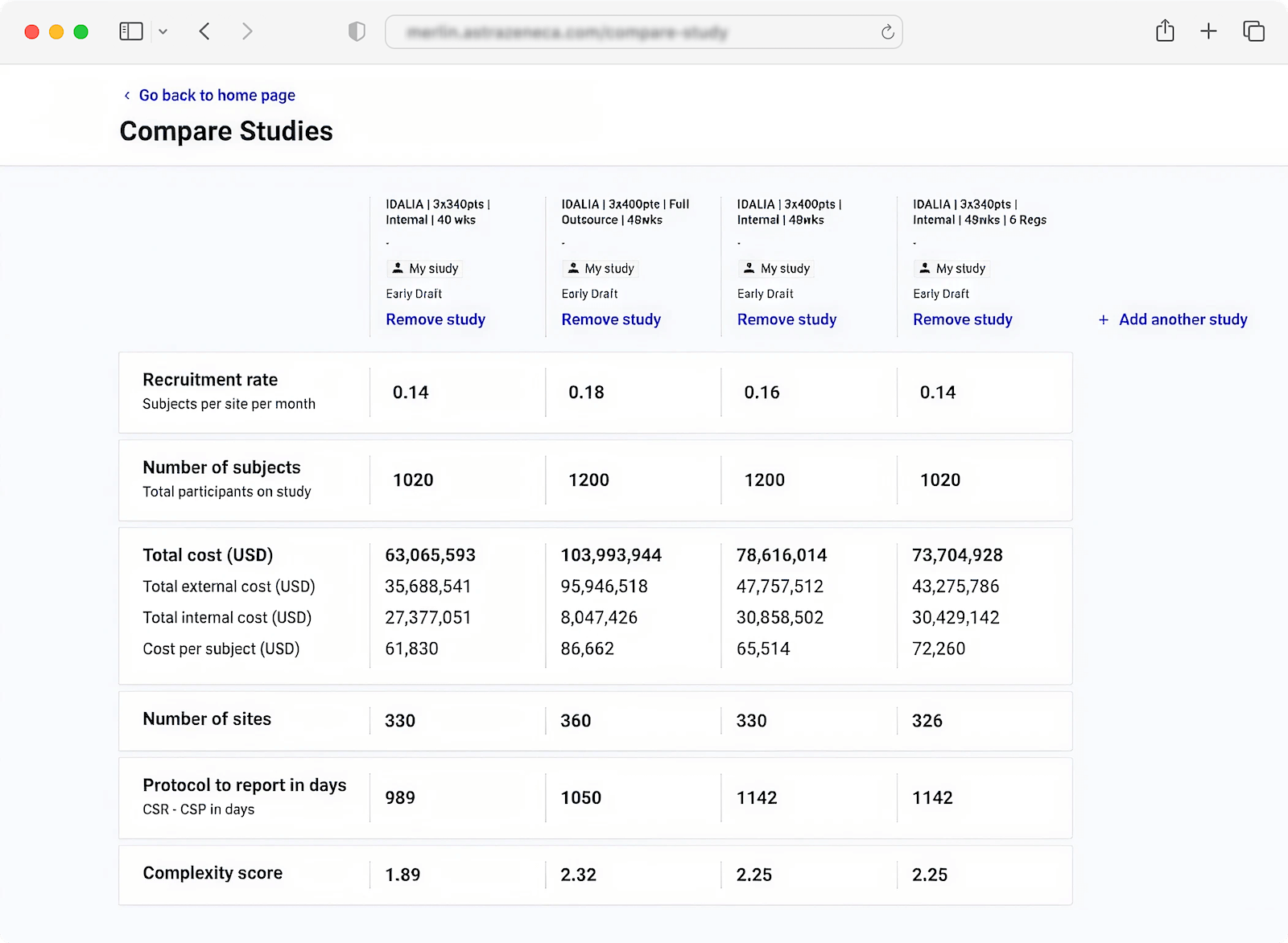
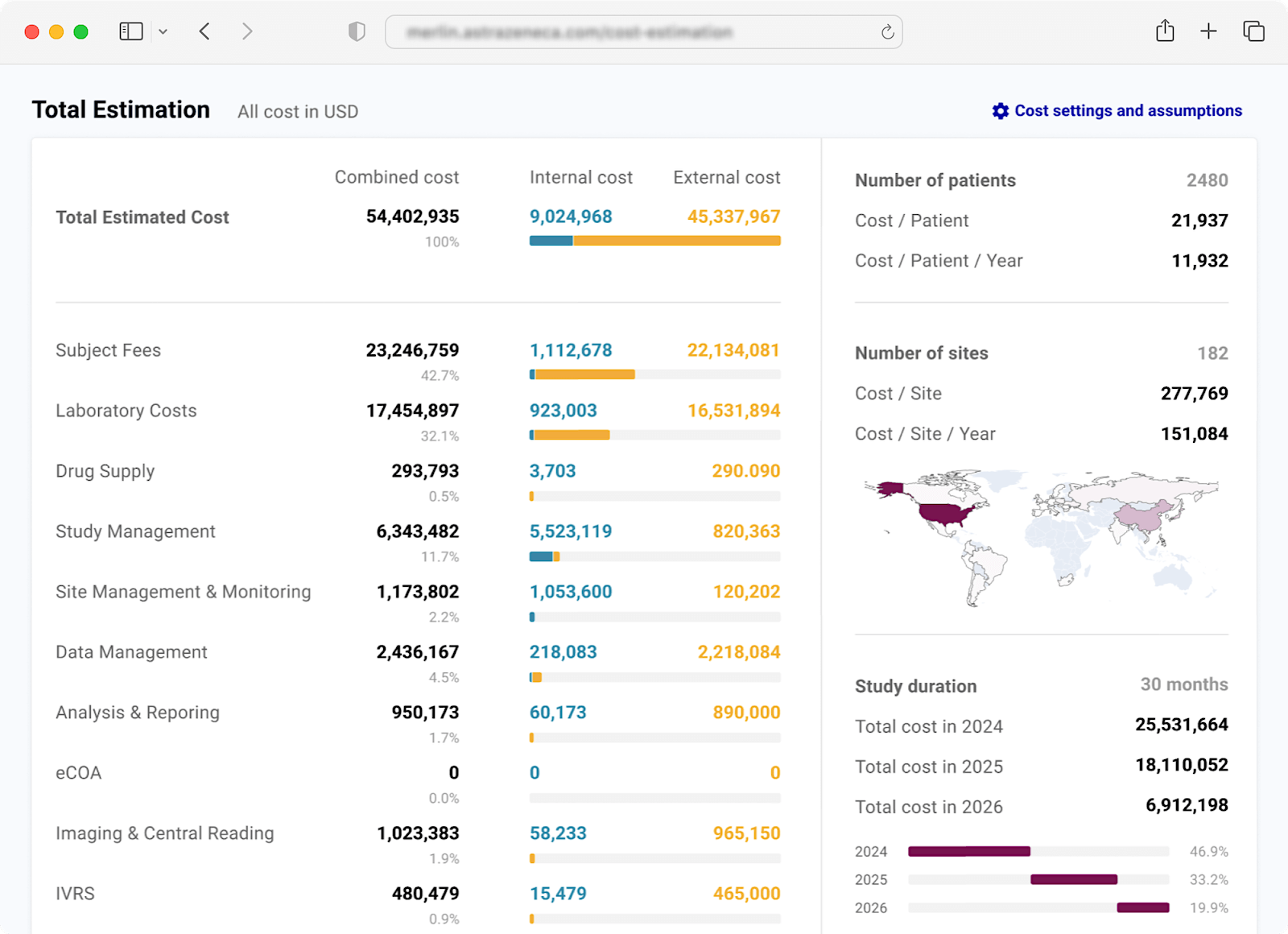
Users can now control all clinical study metrics when optimising study design. For example, monitoring rising total cost as they add sites to accelerate recruitment.
The Result
Merlin launched in October 2023 and replaced all six consolidated workflows. 100% of users successfully migrated to the new app (tracked in analytics).
We baselined Merlin's CSAT and UMUX-Lite scores on launch. Over the next year I drove product refinements that lifted CSAT by 192%.
In parallel, I transformed the UX team from a UI production unit to an influential partner driving concept and validation of high-value product bets, boosting performance by 340%.